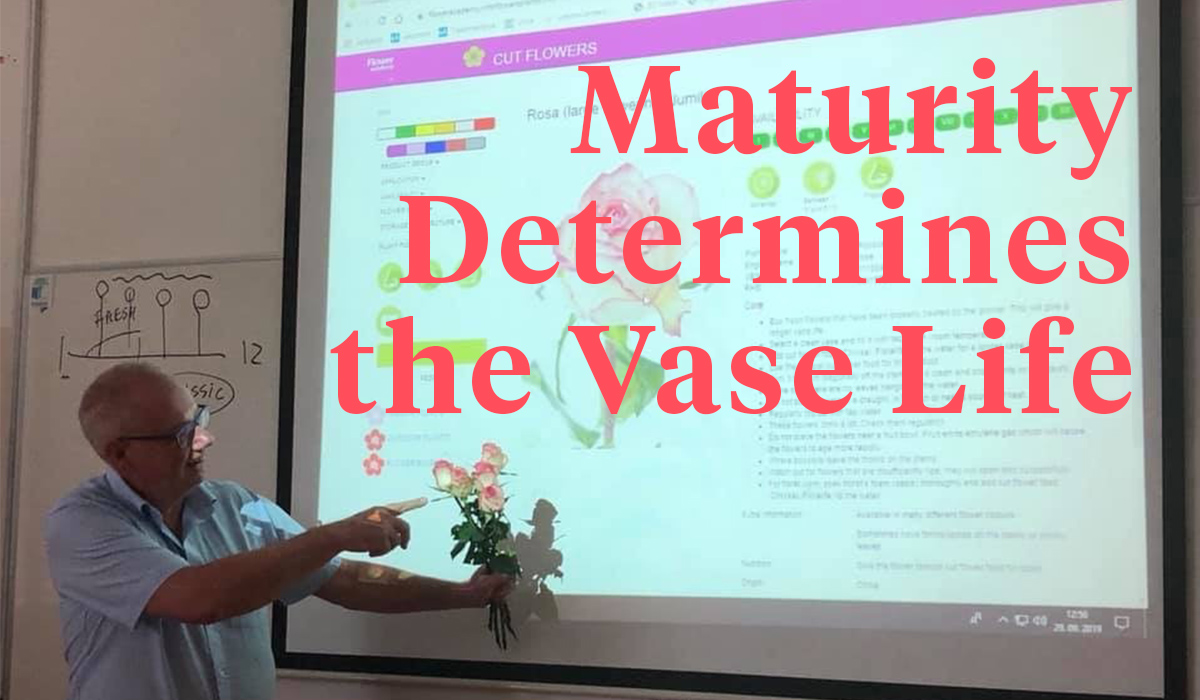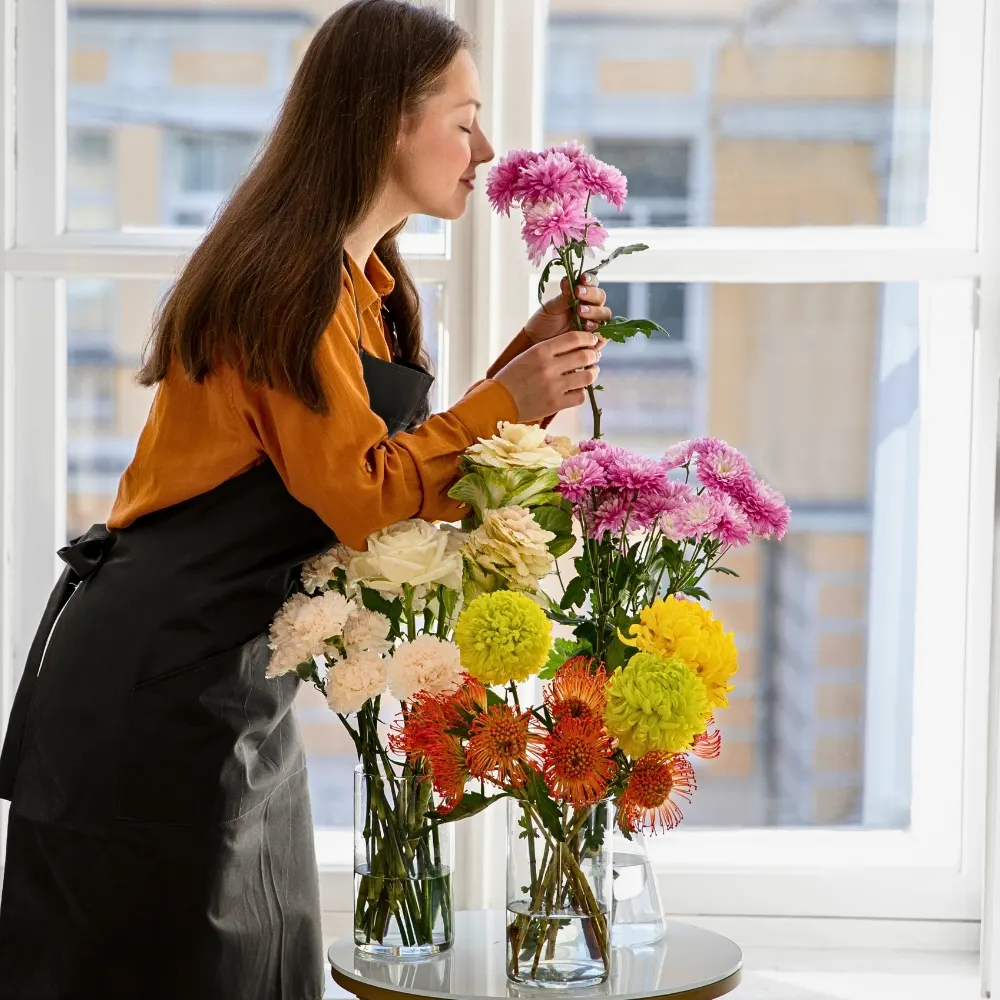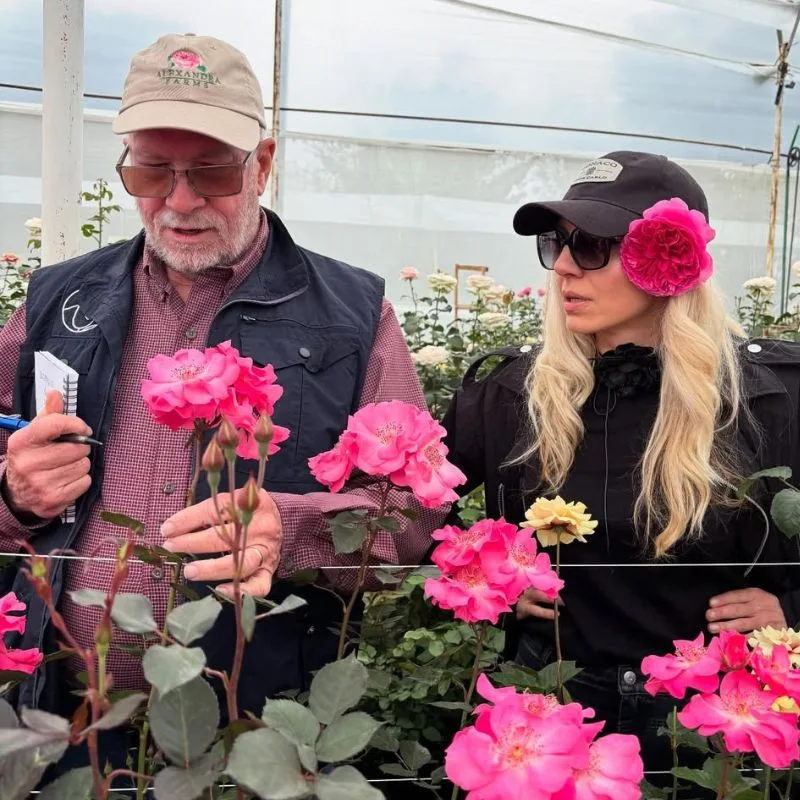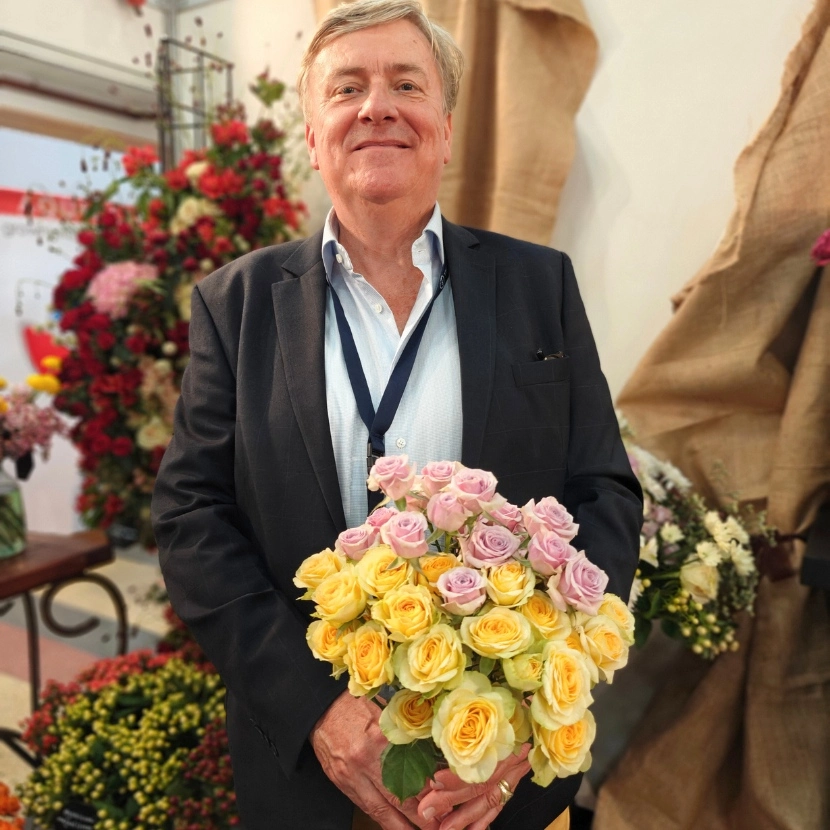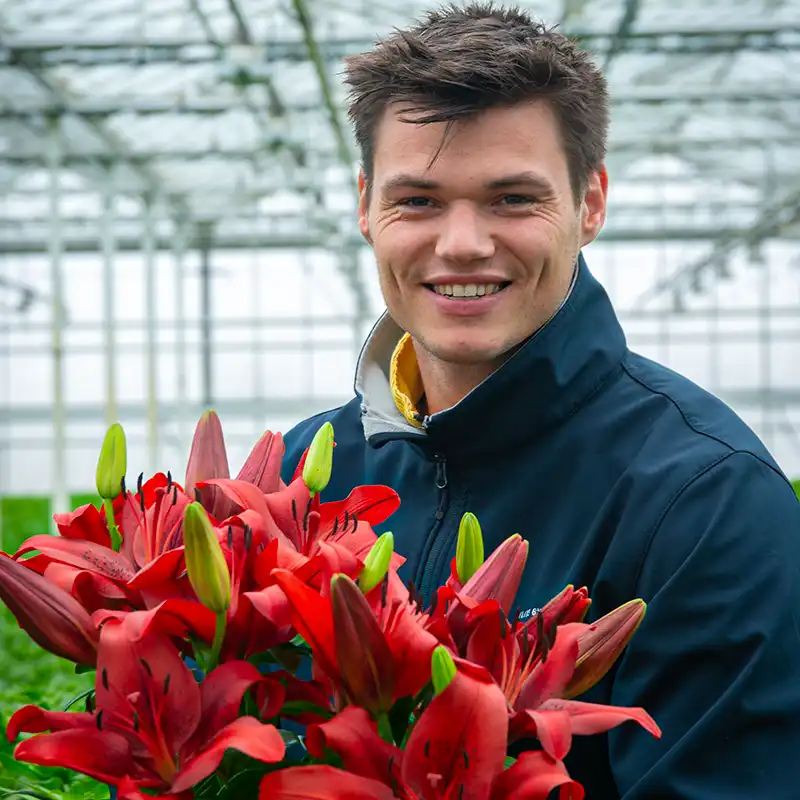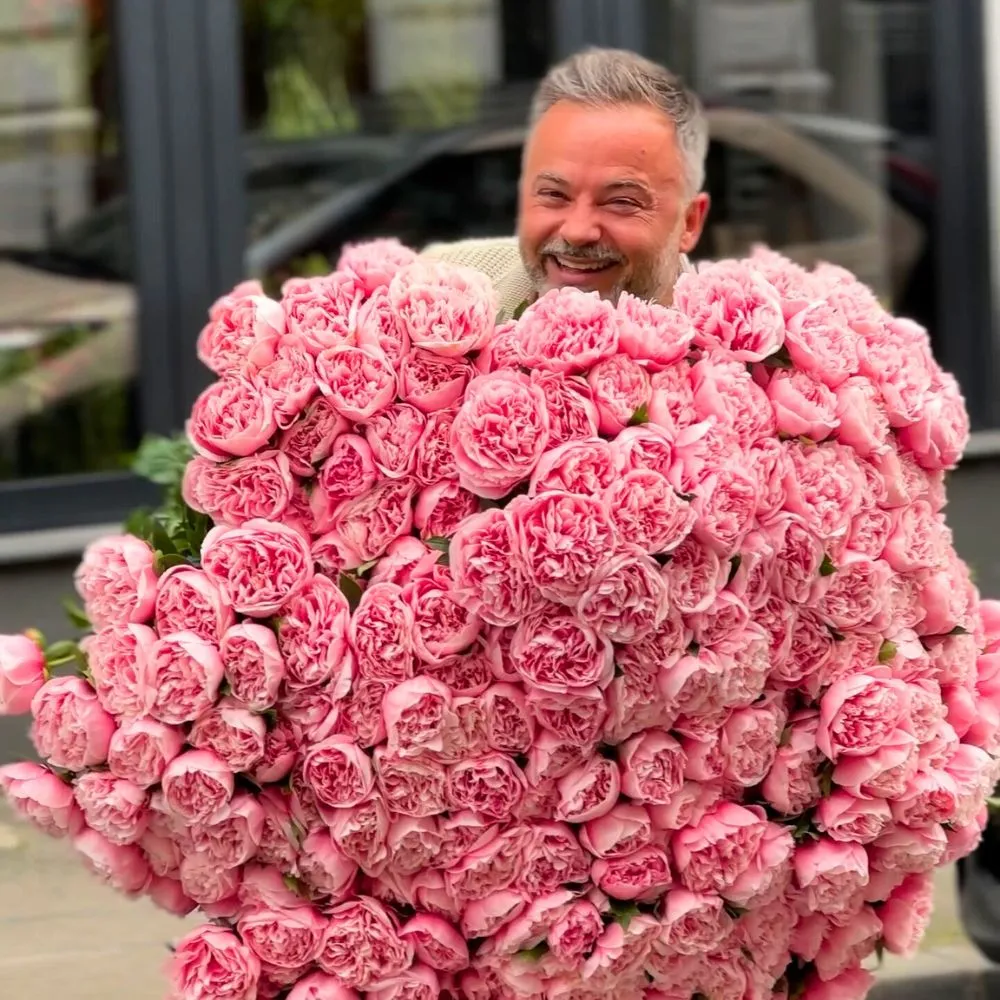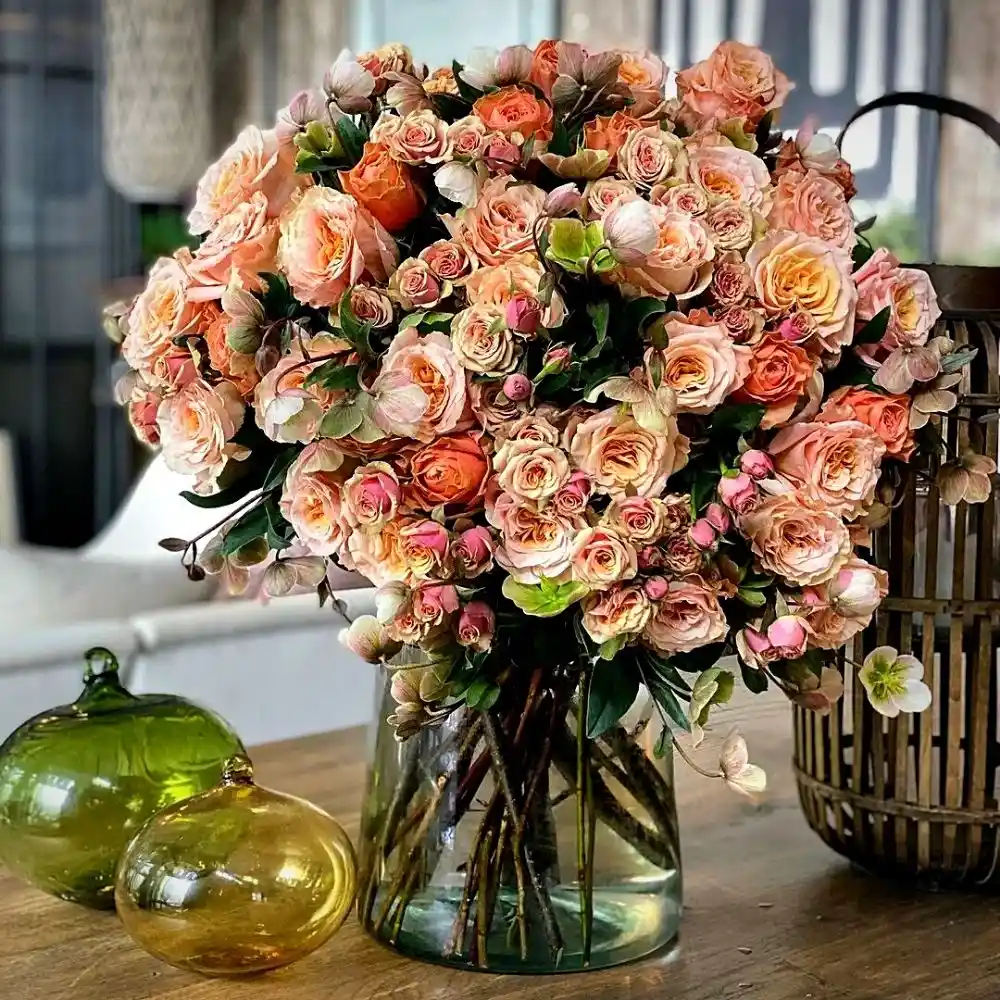Floweracademy is a renowned Dutch institute that trains the entire chain of flowers and plants. Founder and teacher Lucas Jansen freely shares his knowledge and expertise about how the maturity of flowers determines the vase life. This long read contains need-to-know info for every floral professional.
Success Factors for Purchasing
The ripeness of flowers is one of the success factors for your purchasing. The maturity stage has a major influence on the opening of the flowers to your customers and thus determines the vase life. 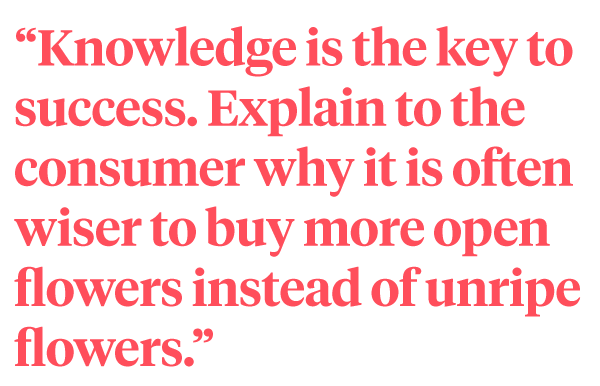 Knowledge of flowers is necessary to assess whether a flower has the right maturity stage. Every flower has its own optimal maturity stage. The trick is to assess with your purchase whether the flowers are still fresh or have finished flowering very quickly. Naturally, a number of factors play a major role in determining the right maturity stage, such as the weather, the seasons, species and cultivar characteristics, and the customer's perception. Many customers still use the criterion: “the rawer, the better”. It is up to the florist to refute this and to explain that slightly riper flowers open better.
Knowledge of flowers is necessary to assess whether a flower has the right maturity stage. Every flower has its own optimal maturity stage. The trick is to assess with your purchase whether the flowers are still fresh or have finished flowering very quickly. Naturally, a number of factors play a major role in determining the right maturity stage, such as the weather, the seasons, species and cultivar characteristics, and the customer's perception. Many customers still use the criterion: “the rawer, the better”. It is up to the florist to refute this and to explain that slightly riper flowers open better.
Information Maturity at the Beginning of the Chain
In the past, various rules have been drawn up by the united flower auctions of the Netherlands on how products must be supplied at their auctions. Growers, auctions, and buyers at the auction clock, in particular, make extensive use of this. In the clock front of the auction or in the described product specifications for mediation, maturity is described with numbers from 1 to 5. Stage 1 is the rawest stage of maturity and stage 5 is the most mature stage. The better a grower sorts, the more flowers within a batch have the same stage. The so-called variation of maturity within a batch is shown with a 2-digit code. For example, the mention of 2-3 means that the maturity within the lot lies between these stages. In concrete terms, this means that in this lot you buy flowers with a maturity stage 2 and/or 3. Flowers with a maturity stage code of 1-5, on the other hand, indicate a very large variation in maturity in the lot. On the website www.VBN.nl, under the heading purchasing specifications, many types of flowers can now be found showing the maturity stages. With the 2-digit code for the variation of maturity within a batch, there is actually no longer any further work in the chain. As a florist or designer, you have to rely on your own insight and experience to assess whether the flowers have reached the desired maturity stage for cash & carries, line drivers, or other purchasing channels. Of course, the advice of the specialized sellers within these companies can sometimes come in handy. There is not any communication towards consumers about maturity stages. Customers will not come with the question: do you have a bunch of roses of length 8, maturity 3-4 for me. Fortunately, otherwise, the sale of flowers would become much more complex than it already is. The purchasing factors of the consumer are more focused on things like length, smell, fresh-looking, service, and experience.
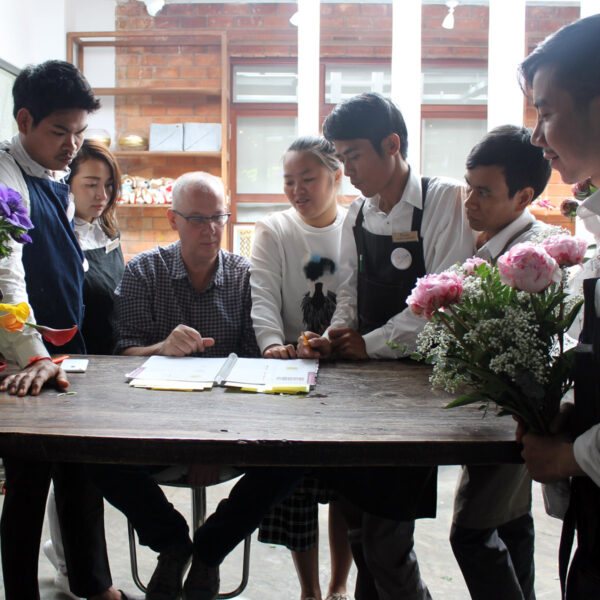
Each Flower Has Its Own Maturity Stage
How ripe or unripe a flower can be harvested by a grower strongly depends on the type of flower. What part of the flower you should ultimately look at to assess the correct stage initially depends on the gender. A few examples:
- With anthurium, you pay attention to the development of the spike - which is the actual flower - and you do not look at the color of the bract, despite the fact that it determines the ornamental value of the anthurium. A fresh flower has a flower spike that is discolored ⅓ to ½.
- With cymbidium, pay attention to the discoloration of the stamp cap and the lip of the flower. If the stamp cap is nice and white, the flower is fresh. If it has turned brown or black, the flower is very ripe or even Moreover, this stamp cap must always be present. If it breaks off, this has a very negative effect on the shelf life.
- With gerbera, you look at the developed (open) stamen wreaths inside the flower. Proper ripeness starts with 2 to 3 open wreaths. The stamen wreaths develop from the outside in. When the entire heart is fully grown, the flower is ripe. The same applies more or less for products with an equal flower structure, such as helianthus (sunflowers).
- With elongated flowers such as antirrhinum (snapdragon), aconitum (monkshood), delphinium (larkspur), and matthiola (violin), pay attention to the development of the flowers from bottom to top along the stem. The best stage is when the flowers are langs to ½ along the stem.
Cultivar Properties
Another element that plays a major role is the cultivar properties. Each cultivar has its own characteristics. For example:
- Cultivars of tulips each have their own ideal maturity. Who still remembers the time of the (Golden) Apeldoorn, Atilla, and many other tulips that were almost completely green? The current range is offered in more color tones to ensure that the flowers in the vase will open and do not get stuck in the bud. Twenty years ago, all tulips were offered almost green, so at a very raw stage. After that, depending on cultivar characteristics, we started offering the flowers more in color, because it turned out that the very raw tulips, often do not open in the vase.
- Rose cultivars each have their own ideal maturity stage. Some roses always open, even if you buy them quite raw. You have to buy other roses almost completely open because otherwise they simply get stuck in the bud. But with more and more roses, the bud is fully developed and the petals are loose so that it cannot get stuck in the bud. With roses there is also something specific: during production, the rose in the petals produces energy (sugars) that the flower will use, after it has been cut, to open up in the vase. When the rose is cut at an early stage, not enough energy has been created to open. This optimal cutting stage, therefore, differs per cultivar. In order to find out whether a rose is fresh or not, it is important to have confidence in the floral chain prior to purchasing. The grower delivers his flowers fresh and the wholesaler, line driver, or Cash & Carry sells the products fresh to the florist. Some use the 'trick' to pinch the flower bud to see if it is hard enough. It gives an indication but is not always indicative. It also depends on whether the rose itself has many or few petals. And when everyone squeezes the buds of roses, you might see bruises a few days later. So this is not desirable. Own experiences with rose cultivars and perhaps also keeping records of them (collecting complaints, etc.) is a better indicator for purchasing roses, although this is not always the case due to the major weather influences and grower differences.
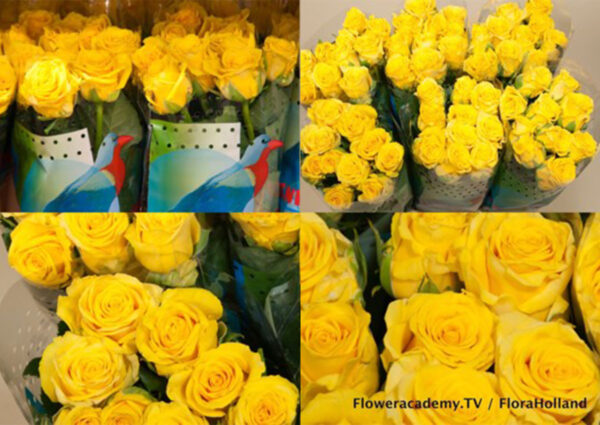
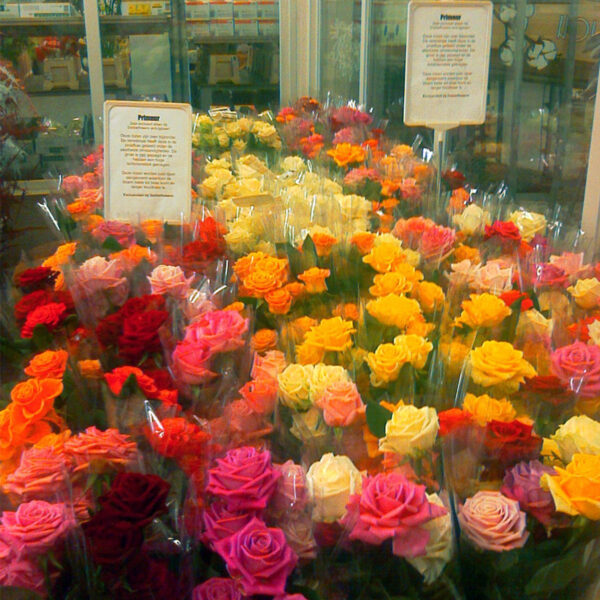
The quality image of the producer and the supplier is increasingly important. Under the influence of the retail chains, we already see that now they work with harvest dates, shelf life guarantee, expiry sales dates, etc. It will not be long before this will also be introduced sector-wide, including for florists. 'Mis-purchases', such as now with Valentine's Day or International Women's Day can then be prevented.
Other Factors that Play a Role in Maturity
- Time of the year/season. In spring and summer, the development of flowers is better for the production of cut flowers, due to the higher temperature and better growing conditions in the greenhouses. The flowers will also open more easily and quickly in the vase. Many flowers are cut a bit rawer in summer than in winter. In winter, on the other hand, with dark, short days, the flowers are offered a fraction riper to make sure they develop well with the consumer.
- Image of the flower. Flowers like freesia and alstroemeria have the image of a supermarket flower, with all its consequences. The maturity of these products is sometimes so raw that you can hardly see what color the buds are. For this reason, many florists no longer buy these flowers. Fortunately, the better growers of these products offer flowers with color-buds, in heavier quality classes, and longer lengths. As a result, the product no longer resembles the green supermarket bush. This gives you the opportunity to interest your customers in these products again.
- Adding preservatives. For many products, adding a preservative is an aid to fully develop the flowers in the vase. That is not to say that a very unripe flower with a bag of Chrysal will come out anyway. The cutting stage, as described above, is important initially. Additions in the floral chain of e.g. Chrysal Professional, Chrysal Clear, or similar products have particularly positive effects on the shelf life. In tulips, for example, the stretching of the flowers will be reduced. In the case of pre-treated irises, the opening will be less problematic. In the case of pre-treated delphinium, the flower moult will be prevented. Every product will benefit, with the addition of Chrysal or similar products, to keep the bud development optimal, especially as a service to the customers.
- Transport and storage. A frequently heard argument for buying flowers immature is the fact that they can take less damage during transport. Obviously, this plays a particularly important role for exporters and wholesalers, because a damaged product does not, of course, sell as well. The fact that raw products can be stored longer in cold stores, etc., also plays a role. However, when transport and storage have such a negative effect on the shelf life of the flowers, the question is what you do best. Finding a balance between maturity and storage is partly dependent on the turnover rate of the products. The faster products can be sold fresh, the better the vase life will be. Long storage is never good, and especially with very raw products this will have adverse effects, many products will get stuck in the bud and therefore never come out.
- Use. The necessary maturity of flowers you purchase depends on what they will be used for. More mature flowers will be required for occasional flower arrangements such as mourning and bridal work or room decorations. For bouquets or other consumer arrangements, it is often important to know your consumers' expectations to meet. Some growers are responding to the need to make flowers at the nursery more ripened and colored so that they can 'shine' more at the occasion for which they are used. For example for alstroemeria, lilium, freesia, and Dutch roses.
The Idea to Inform Customers
As a tip for florists, it is an idea to use more of this information above towards your flower shop consumers. With a presentation of photos and/or vases of flowers in different cutting stages, you have a good communication tool to explain to the consumer why it is often wiser to buy more open flowers instead of unripe flowers. Here, too, communication is the key to success and removing these 'prejudices'. Knowledge is the key to success.  About Floweracademy: Lucas Jansen has been providing courses and training courses on assortment, care, and handling, quality, and flower arranging for 35 years in 25 different countries. Visit www.floweracademy.nl for more information. In their app InfoFlowersPlants you can find the commercial range of cut flowers, house and garden plants with photos, background information, and care and handling tips. It is an innovative replacement for the books from Bloemenbureau Holland from the past.
About Floweracademy: Lucas Jansen has been providing courses and training courses on assortment, care, and handling, quality, and flower arranging for 35 years in 25 different countries. Visit www.floweracademy.nl for more information. In their app InfoFlowersPlants you can find the commercial range of cut flowers, house and garden plants with photos, background information, and care and handling tips. It is an innovative replacement for the books from Bloemenbureau Holland from the past.

